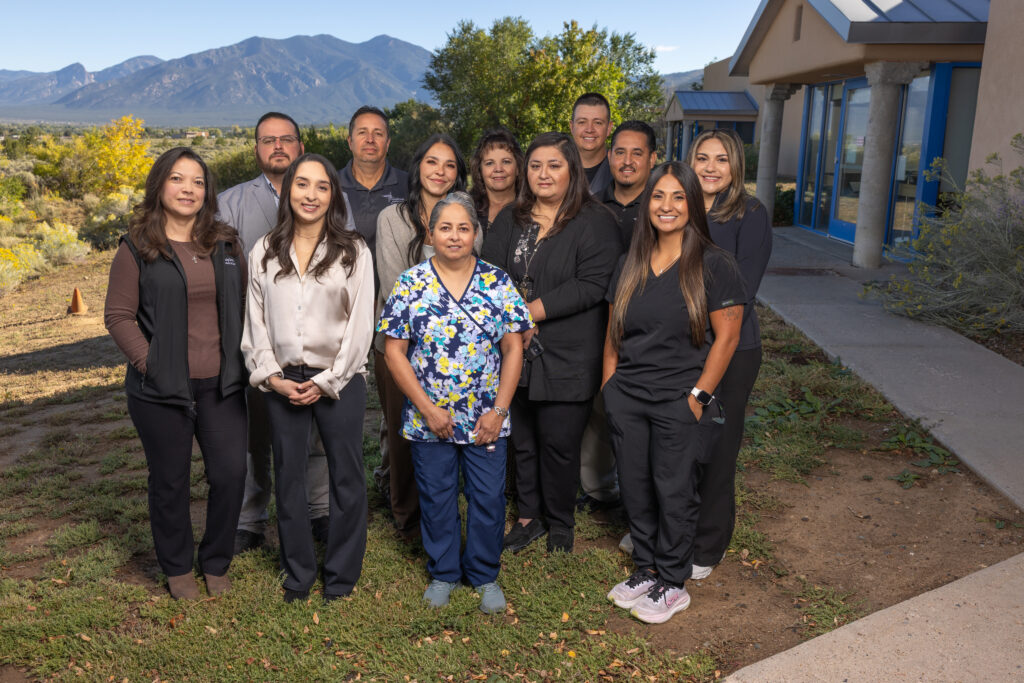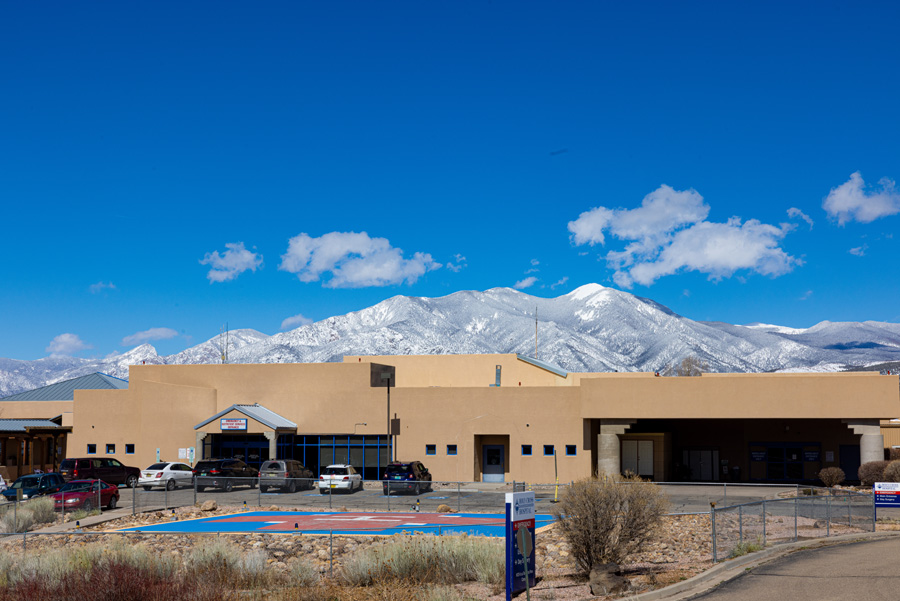As voters prepare to head to the polls this November, one measure will directly impact the future of healthcare in Taos County: the proposed renewal of a one-mill levy to support Holy Cross Hospital. While the levy does not cover daily operations, it provides essential funding for capital improvements, ensuring that the community hospital can continue to provide vital services amid national uncertainty for rural healthcare.
The proposal on the ballot is the renewal of the one-mill levy that had been in place since 2016 and expired in 2024. One mill reflects $1 per $1,000 of a property’s net taxable value, which is calculated as one-third of the county’s assessed valuation. The renewal, if approved, would run for four years and generate an estimated $1.5 to $1.8 million annually for capital expenses such as building repairs, infrastructure upgrades, and the purchase and maintenance of medical equipment.
James Kiser, CEO of Holy Cross Medical Center, urged voters to view the levy as an investment in the community’s health. “This is a renewal of a levy the community has supported for years,” he said. “Every dollar helps us maintain safe facilities, modern equipment, and quality care close to home. By renewing this levy, we’re ensuring that families can continue to count on Holy Cross for the care they deserve, now and for generations to come.”
Rural hospitals across the state and country are under mounting financial pressure. A recent study by the Chartis Group found that nearly half of rural hospitals operate at a financial loss, with more than 430 considered vulnerable to closure nationwide. Since 2010, 182 have either closed or shifted away from acute care. “Our community deserves great care,” Kiser said. “We want to maintain and expand the services we provide to northern New Mexico, and local support goes a long way toward keeping critical services accessible without requiring travel.”
Holy Cross is not at risk of immediate closure, but it faces real challenges that must be addressed to ensure its long-term strength. Approximately three-quarters of the Holy Cross Hospital’s revenue comes from Medicare and Medicaid patients. Recent federal policy changes will add new restrictions for Medicaid eligibility and could leave more patients uninsured, adding financial strain to facilities that already provide a significant amount of under-reimbursed and uncompensated care. “We are not currently in a dire situation, and we are not at immediate risk of closing, but without knowing what the future holds, we have to be good stewards of our local hospital and ask for continued support,” Kiser said. “Especially now, it’s important that rural health care facilities like ours remind the country that we are here and that we need ongoing community commitment.”
In recent years, Holy Cross has worked to strengthen its finances while expanding services so more residents can receive care close to home. From lifesaving emergencies to welcoming new life, the hospital remains a cornerstone of the community. Labor and delivery has long been one of its most cherished services, with more than 10,000 babies born at Holy Cross since 1937. The emergency department continues to provide round-the-clock services from board-certified physicians and a dedicated team of caregivers. Building on these foundations, the hospital has added specialties such as cardiology, robotic-assisted surgery, primary care, women’s health, pediatrics, podiatry, and orthopedics. Looking to the future, Holy Cross hopes—if resources allow—to expand further with chemotherapy and urgent care.
Holy Cross Medical Center now employs more than 550 people, a reflection of its role as both a healthcare provider and one of the county’s largest employers. Kiser underscored the human side of this presence.
“We are not a faceless institution; we are a hospital with heart and soul,”
– James Kiser
For longtime employees, that sense of connection runs deep. Lenora Cisneros, who has worked at Holy Cross for more than 35 years, said, “I’ve seen how deeply this hospital is tied to our community. The people who work here aren’t just employees, we’re like family. Supporting the hospital means supporting your neighbors and friends, the people who live here and want to keep this community strong.”

make up the Holy Cross team. Pictured from back left to front right: Joel Miera, Mike Rael, Sara
Fernandez, Lenora Cisneros, Dale Cisneros, Marcos Romero, Mariana Enciso, Vanessa Garcia,
Mercedes Burns, Barbara Overby, Amanda Leon, and Christian Ortega
To some, it may seem that the subject of healthcare funding arises frequently, but that is because financial stability remains a constant challenge in rural healthcare. Federal budget decisions, changes to Medicare and Medicaid, and even state-level policies about reimbursement rates or insurance coverage can all create ripple effects that directly impact rural hospitals. Each shift, combined with the expiration of local support like the mill levy, adds uncertainty to an already delicate system. For Holy Cross, capital funding through the levy is what helps the hospital keep pace with facility needs. Recognizing this, county commissioners approved placing the mill levy measure on the ballot, leaving the decision in the hands of voters.
Workforce shortages add another layer of financial pressure for rural hospitals. Staffing is one of the largest operational costs, and shifts in funding or reimbursement can quickly impact the bottom line. Staffing healthcare positions requires Holy Cross to stay nationally competitive on salaries, and Taos provides natural advantages that attract workers, from outdoor recreation and open space to a high quality of life. Even so, concerns about the stability of rural hospitals can make recruitment more difficult. “Since the announcement of the new federal budget, we’ve already had a few physicians reconsider choosing Holy Cross as an employer,” said Sue Romansky, Chief of Ancillary and Physician Services. “The national uncertainty in rural healthcare has made recruitment more challenging. That said, many providers continue to see this as an extraordinary place to live and work, and we remain confident in our ability to attract great talent.”
Since its founding in 1936, Holy Cross has been part of the fabric of Taos County. Generations of residents have relied on its emergency services, primary care, and specialty providers. Kiser believes that legacy—and the hospital’s mission to care for all who need it—remains strong. “Together, we will not only endure the changes ahead; we will continue working toward a stronger, healthier future.”
At the same time, hospital leaders remain realistic about the challenges ahead. Declining reimbursements from federal programs, workforce shortages, and rising levels of uncompensated care are part of a national crisis facing rural healthcare. Holy Cross cannot control those forces, but local support can help ensure the hospital remains strong enough to weather them.
Early voting runs from October 7th through November 1st at the Taos County Courthouse and Election Day is November 4th. All county residents are eligible to vote on the mill levy. Kiser concluded, “The levy is, at its heart, an investment in the community’s health and in the future of Holy Cross Hospital.”

